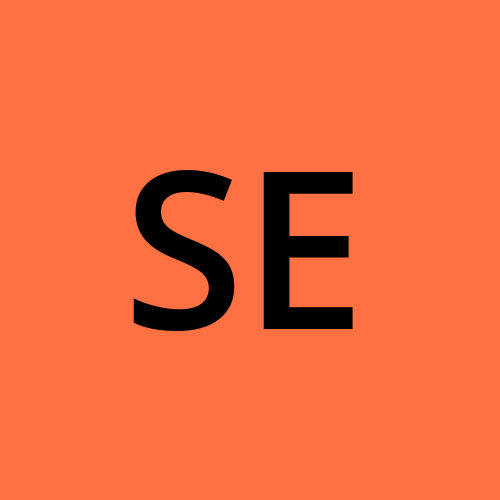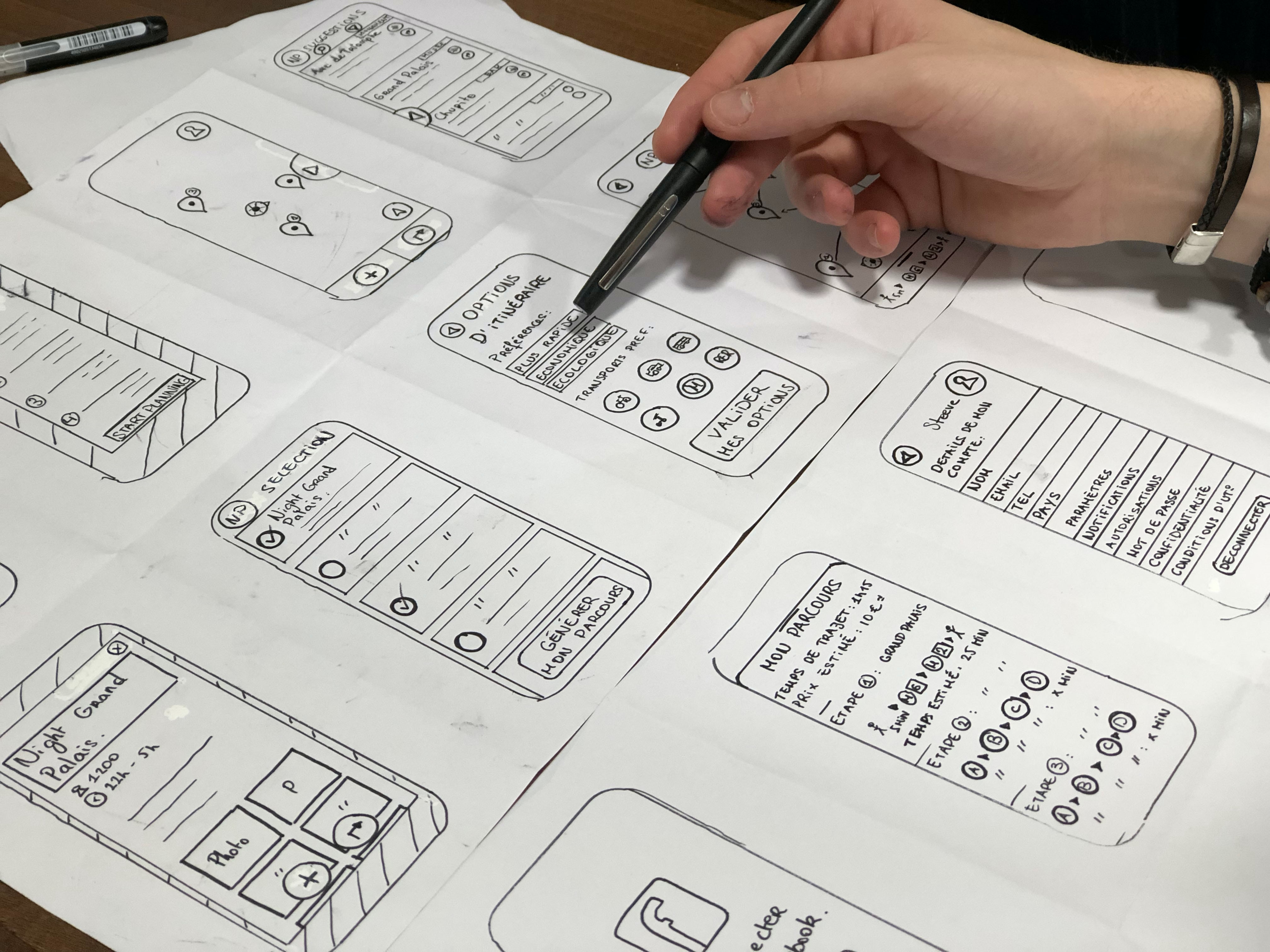UX Design
 Stephanie Ekong
Stephanie Ekong
UX design aims to create a seamless and enjoyable user journey that meets both user expectations and business objectives. A well-designed user experience can lead to higher user satisfaction, increased user retention, and better overall product success.
User Research: UX designers conduct research to understand the needs, preferences, and behaviors of the target users. This can involve surveys, interviews, user testing, and other methods to gather insights.
Information Architecture: Designers create a logical and organized structure for information and content within the product. This ensures that users can easily find what they're looking for.
Interaction Design: UX designers define how users will interact with the product. This includes designing the layout, navigation, and user interface elements to make them intuitive and user-friendly.
Usability Testing: Testing is a crucial part of UX design. Designers observe how users interact with prototypes or the actual product to identify issues and make improvements.
Wireframing and Prototyping: Designers create wireframes and prototypes to visualize the product's layout and functionality before development begins. This helps in early testing and refinement.
Visual Design: Visual design focuses on the aesthetics of the product, including colors, typography, graphics, and overall visual appeal. It aligns the design with the brand and user expectations.
Accessibility: UX designers consider accessibility to ensure that the product is usable by people with disabilities. This includes designing for screen readers, keyboard navigation, and other assistive technologies.
User Testing and Feedback: Ongoing user testing and feedback collection help designers refine the product and address any usability issues that arise after launch.
Iterative Design: UX design is an iterative process. Designers continuously make improvements based on user feedback and changing requirements.
Collaboration: UX designers often work closely with developers, product managers, marketers, and other stakeholders to ensure that the final product aligns with business goals and user needs.
What UX Design process consist of:
The UX (User Experience) design process is a systematic approach to creating products and services that are user-centered and provide a positive, seamless, and enjoyable experience for the users. While there are various models and variations of the UX design process, a typical UX design process consists of the following stages:
Research: This phase involves understanding the target audience, their needs, behaviors, and pain points. It includes activities like user interviews, surveys, competitor analysis, and market research to gather insights.
User Personas: Create detailed user personas based on the research findings. Personas represent different user archetypes and help the design team empathize with users and make design decisions that cater to their specific needs and preferences.
Information Architecture: Develop the structure and organization of content and features within the product. This may involve creating sitemaps, user flows, and wireframes to visualize the layout and hierarchy of information.
Wireframing: Create low-fidelity wireframes that outline the basic layout and functionality of the product. Wireframes serve as a blueprint for the design and provide a clear understanding of the product's structure.
Prototyping: Build interactive prototypes to simulate the user experience. Prototypes can range from low-fidelity (paper prototypes or digital sketches) to high-fidelity (clickable prototypes with realistic interactions).
Usability Testing: Conduct usability testing sessions with real users to gather feedback on the prototype. This helps identify usability issues and areas for improvement in the design.
Iteration: Based on the feedback from usability testing, iterate on the design, making necessary changes and refinements to address user concerns and improve the user experience.
Visual Design: Create the visual elements of the product, including the user interface (UI) design, color schemes, typography, and graphic assets. The goal is to ensure that the product is aesthetically appealing and aligned with the brand's identity.
Development: Collaborate with the development team to bring the design to life. UX designers work closely with developers to ensure that the design is implemented correctly and that the user experience matches the intended design.
Testing and Quality Assurance: Conduct thorough testing to identify and resolve any functional or usability issues that may arise during development. This ensures that the final product is stable and meets the design requirements.
Launch: Release the product to the intended audience. This may involve a soft launch to a limited user group before a full-scale launch to the public.
Post-launch Evaluation: Continuously monitor user feedback, analytics, and metrics to assess the product's performance and gather insights for further improvements.
Iterate and Improve: Use the post-launch data and user feedback to make ongoing refinements to the product. The UX design process is iterative, and improvements should be made based on real-world usage and user needs.
It's important to note that the UX design process is not always linear and can involve overlapping stages. Additionally, the level of detail and the specific activities within each stage may vary depending on the project, team, and resources available. The key is to keep the user at the center of the design process and continuously strive to enhance their experience.

UX(User Experience)
Here are some common misconceptions
It's Just About Making Things Look Pretty: One of the most common misconceptions is that UX design is solely concerned with aesthetics. While aesthetics are important, UX design is primarily about creating efficient, user-friendly, and functional experiences. It involves understanding user behaviors, conducting research, and designing interfaces that solve specific problems.
It's Easy and Anyone Can Do It: UX design may appear simple on the surface, but it's a multidisciplinary field that requires a deep understanding of psychology, research methodologies, information architecture, and usability principles. While anyone can learn UX design, becoming proficient takes time and experience.
It's Only About the User Interface (UI): UX design goes beyond UI design. It encompasses the entire user journey, from the moment a user discovers a product or service to the post-interaction phase. This includes tasks like user research, wireframing, prototyping, usability testing, and more.
It's a Solo Endeavor: UX design is often a collaborative effort. While individual designers play a significant role, it involves working with cross-functional teams that may include developers, marketers, product managers, and others. Effective communication and teamwork are essential skills for UX designers.
It's All About Technology: While technology is an important aspect of UX design, it's not limited to digital products. UX principles can be applied to physical products, services, and even non-technical aspects of life. It's about improving experiences in various contexts.
UX Design Is Static: Some people think that once a product is designed, the UX work is done. In reality, UX design is an iterative process. Designers continually gather feedback, make improvements, and adapt to changing user needs and market conditions.
UX Designers Only Need to Focus on Users: While understanding users is crucial, UX designers also need to consider business goals and constraints. Balancing user needs with business objectives is essential for creating successful products.
It's Only About Qualitative Data: UX design involves both qualitative and quantitative data. While user interviews, surveys, and observations provide qualitative insights, quantitative data from analytics tools can help designers make data-driven decisions.
It's Only for Creative Types: UX design requires creativity, but it's not limited to artistic or creative individuals. Analytical thinking, problem-solving skills, and empathy for users are equally important.
It's a One-Size-Fits-All Approach: UX design is adaptable and context-dependent. What works for one project or audience may not work for another. Designers need to tailor their approaches to specific situations.
In conclusion, UX design is a multifaceted field that encompasses much more than what many people initially assume. It requires a blend of research, design, communication, and problem-solving skills, along with a deep understanding of both users and business goals.
UX Design Portfolio
Creating a compelling UX design portfolio is essential for showcasing your skills and landing UX design jobs or freelance opportunities. Here's a step-by-step guide on how to create an effective UX design portfolio:
Choose Your Best Work: Start by selecting your top projects. Quality matters more than quantity. Include a variety of projects to demonstrate your versatility as a UX designer.
Case Studies: For each project, create a detailed case study. Include the following elements:
Introduction: Briefly describe the project and its context.
Problem Statement: Explain the user problem or challenge you were trying to address.
Research: Discuss your user research methods and findings.
Ideation: Present your design process, including wireframes, sketches, and design iterations.
Solution: Showcase the final design, including user flows, mockups, and prototypes.
Results: Share any measurable outcomes or user feedback that resulted from your design.
Reflection: Reflect on what you learned from the project and how you might improve in the future.
Visual Design: Ensure that your portfolio itself is well-designed. Use a clean, professional layout that aligns with your personal brand. Pay attention to typography, color choices, and overall aesthetics.
User-Centered Approach: Highlight your commitment to user-centered design principles throughout your portfolio. Emphasize how you put users at the center of your design decisions.
Show the Process: Use visuals and descriptions to walk viewers through your design process. Include sketches, wireframes, and prototypes to demonstrate how you arrived at the final design.
Include Personal Projects: If you have personal projects or redesigns of existing apps or websites, include them. They can showcase your creativity and initiative.
Interactive Prototypes: Whenever possible, include interactive prototypes. Tools like Figma, Adobe XD, or InVision can help you create clickable prototypes to give viewers a hands-on experience of your designs.
Usability Testing: Mention if you conducted usability testing as part of your design process. Describe the methods you used and any insights gained.
Mobile Responsiveness: Make sure your portfolio is mobile-responsive. Many people will view it on their smartphones or tablets.
Write Clearly: Use clear and concise language throughout your portfolio. Avoid jargon and explain complex concepts in a way that anyone can understand.
Contact Information: Include your contact information, such as an email address or a link to your LinkedIn profile, so potential employers or clients can easily get in touch with you.
Regular Updates: Keep your portfolio up to date with your latest work and skills. UX design is a rapidly evolving field, and you want to showcase your most recent accomplishments.
Feedback: Before publishing your portfolio, get feedback from peers or mentors in the UX design industry. They can provide valuable insights and suggestions for improvement.
Host Your Portfolio: Choose a reliable platform to host your portfolio, such as personal website hosting or platforms like Behance, Dribbble, or UX design portfolio services like UXfolio or UXfol.io.
Promote Your Portfolio: Share your portfolio on social media, professional networking sites, and with potential employers or clients. Actively seek opportunities to showcase your work.
Remember that your UX design portfolio is a reflection of your skills and professionalism. Take the time to craft it thoughtfully, and it will help you stand out in the competitive field of UX design.
UX Design For Beginner
UX (User Experience) design is a broad field that focuses on creating products and services that are user-friendly and provide a positive experience for the people who use them. If you're a beginner looking to get started with UX design, here are some steps and tips to help you begin your journey:
Understand the Basics:
- Start by learning the fundamental principles of UX design. Books, online courses, and tutorials can be valuable resources. Some recommended books include "Don't Make Me Think" by Steve Krug and "The Design of Everyday Things" by Don Norman.
Learn the UX Process:
- Familiarize yourself with the UX design process, which typically includes stages such as research, design, testing, and iteration. Understand the importance of user-centered design.
Practice Empathy:
- Put yourself in the user's shoes. Try to understand their needs, goals, and pain points. Empathy is crucial for designing products that resonate with users.
Sketch and Wireframe:
- Start with low-fidelity sketches and wireframes to visualize your design concepts. These simple drawings help you explore ideas quickly before committing to detailed designs.
Usability Testing:
- Conduct usability testing with real users whenever possible. This involves observing users as they interact with your designs and gathering feedback. Even informal testing with friends or colleagues can be valuable.
Learn Design Tools:
- Familiarize yourself with popular UX design tools like Figma, Adobe XD, or Sketch. These tools will help you create high-fidelity prototypes and mockups.
Study Existing Products:
- Analyze and critique existing products and websites. Identify what works well and what could be improved from a UX perspective.
Stay Updated:
- UX design is an ever-evolving field. Follow industry blogs, join UX design communities, and attend webinars or conferences to stay updated on the latest trends and best practices.
Build a Portfolio:
- Start building a portfolio of your work. Even if you're just beginning, include personal projects, redesigns of existing apps, or case studies that demonstrate your thought process and problem-solving skills.
Collaborate:
- UX design often involves working closely with developers, product managers, and other stakeholders. Learn to collaborate effectively and communicate your design decisions clearly.
Seek Feedback:
- Don't be afraid to seek feedback from experienced designers or mentors. Constructive criticism can help you improve your skills.
Network:
- Connect with other UX designers and professionals in the field. Networking can lead to job opportunities, mentorship, and valuable insights.
Stay Curious:
- Keep your curiosity alive. UX design is a field that requires continuous learning and adaptation to new technologies and user behaviors.
Personal Projects:
- Consider working on personal projects to apply your skills and experiment with different design concepts. This can be a great way to learn and showcase your abilities.
Soft Skills Matter:
- Develop soft skills like communication, problem-solving, and critical thinking. These skills are just as important as technical design skills in the UX field.
Remember that UX design is a journey, and it takes time to become proficient. Be patient with yourself and keep learning and practicing. Over time, you'll become a more skilled and confident UX designer.
Subscribe to my newsletter
Read articles from Stephanie Ekong directly inside your inbox. Subscribe to the newsletter, and don't miss out.
Written by
